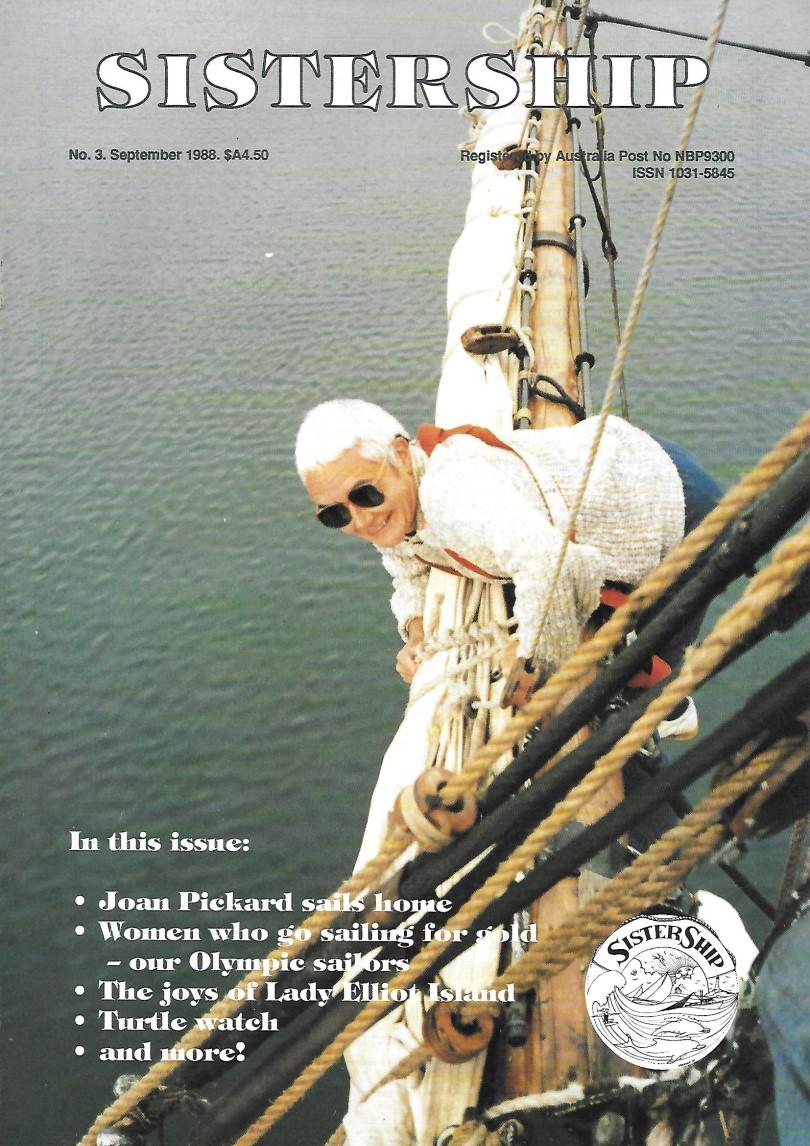
10 minute read
Fun Vibes and Visas in Koh Lipe


Advertisement
GINA DE VERE
MAIN: Hat Pattaya.
BELOW: Walking Street entry.
If you are thinking of sailing in South East Asia, and Thailand in particular, it is most likely you will pass through Langkawi Island, the northernmost exit on Malaysia’s west coast on your way to Thailand. If so, you will check in and out in Kuah Town where there is a large comfortable harbour and good shops for provisioning.
On entering Thailand by sailboat the Thai Customs Department gives you a 30 days entry visa on arrival in Koh Lipe, which is just 40 nautical miles north of Kuah. Immigration for yachts can be done here, but only for the sailing season from November to end of March. You will need to check for up to date information on http:// w w w . m f a . g o . t h / m a i n / e n / services/123/15393-Visa-on-Arrival.html The whole island closes down after the
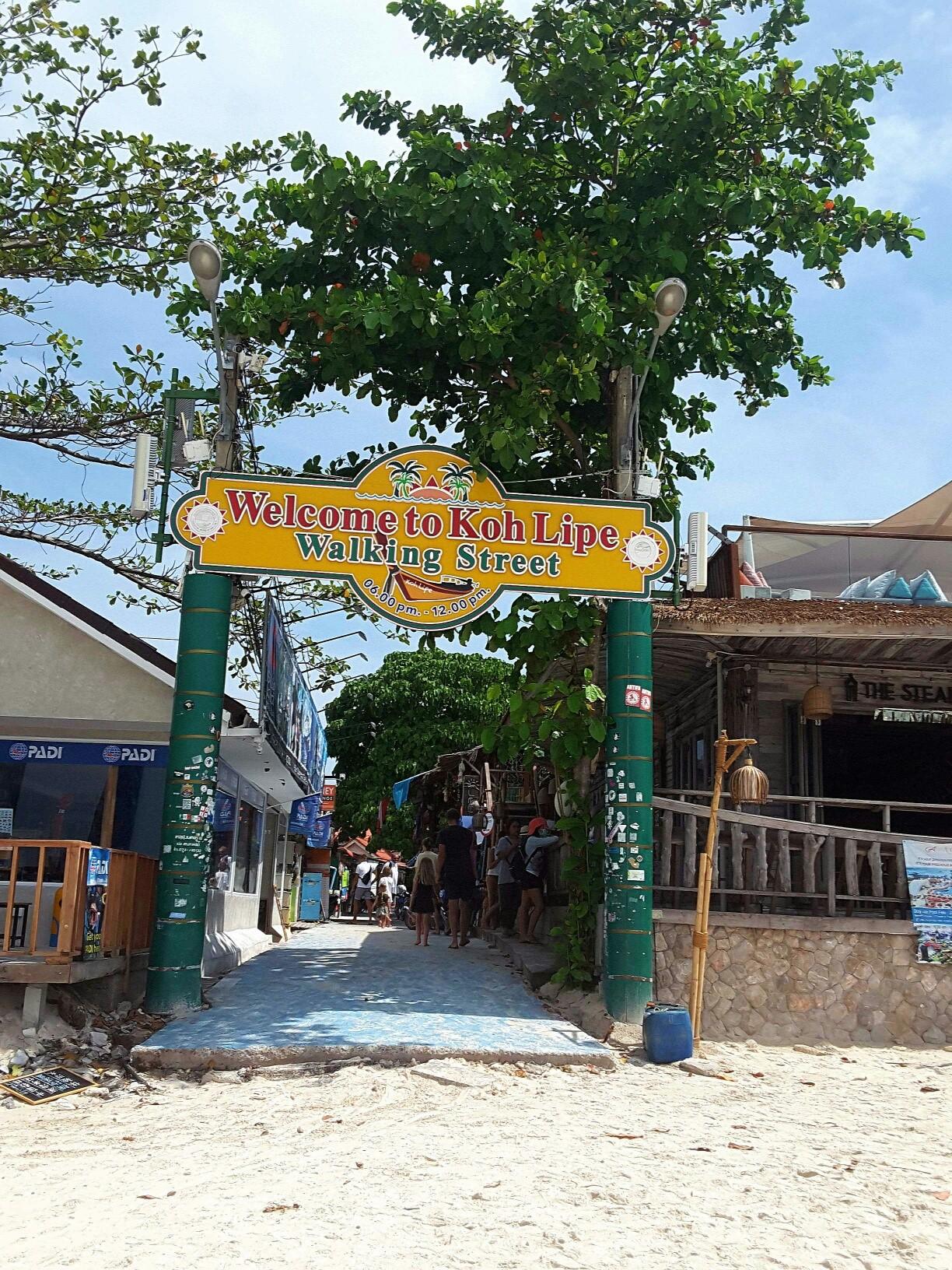
tourist season.
ultra-laid-back vibe in Koh Lipe. Because it is such a short distance away it makes a very convenient port to enter for a visa run from Malaysia. In Malaysia a person can stay for 90 days and a boat can stay indefinitely, however one has to be out of the country for at least seven days before returning to Malaysia. This is no hardship when visiting Koh Lipe and the surrounding islands with stunning bays and clear waters.
We have visited Koh Lipe several times over the past five years of being based in Langkawi. It is a small island of just 1.6 km square with three major beaches: Pattaya with its 1 km long sandy beach, and Sunset and Sunrise beaches. Because there are regular passenger ferries from Langkawi Island, this is a busy little place, a favourite with tourists. The island offers mostly mid-range accommodation with no high rises or hotel chains, but prices rise steeply in the peak season around December.
On our sailboat Stardancerwe anchor or take a mooring at Sunset Beach, which is roughly
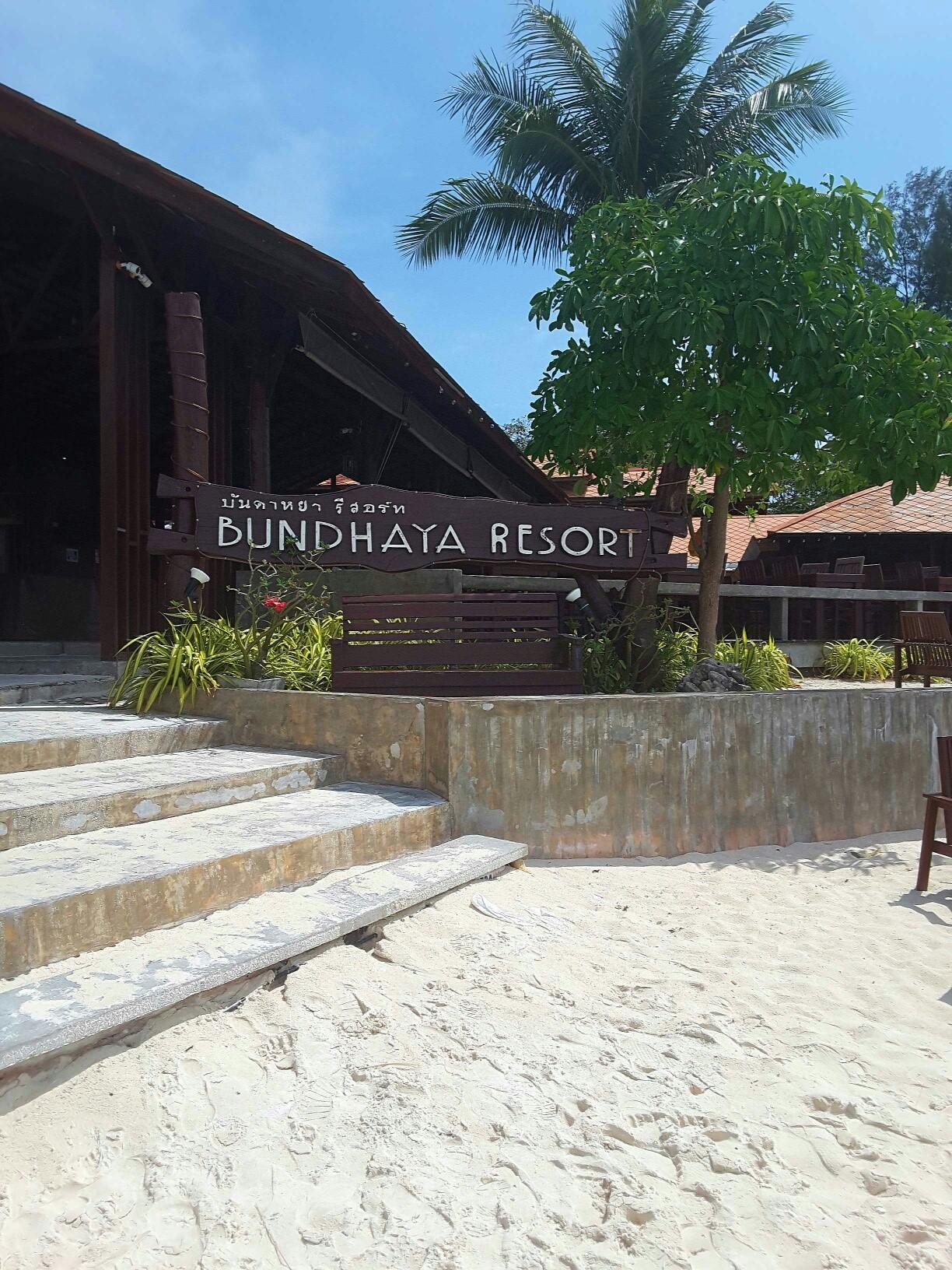
Reggae Bar, Hat Pattaya.

north west, facing dramatic Koh Adang. As its name declares, this is the spot from which to enjoy the amazing sunsets. In the late afternoon, the stretches of beach on this side of the island are covered with people who suddenly materialise to watch the nightly show. Not much else happens on this little island. There are full moon parties, some good bars, and the occasional live reggae band, but mostly after 10 pm it is very quiet!
Sunset Beach itself is a narrow strip of soft sand along a shallow shelf of turquoise water, where the local small fishing boats and water taxis pull up onto the beach. At one end a stunning point of brilliant white sand juts out into the sea, attracting not only body bronzers but also those who enjoy windsurfing and kiteboarding. This stretch of sea is often very windy with strong currents. We take the dinghy ashore to leave in front of the Fisheries Department, where there is one green rubbish bin, then walk up the path, turn right onto a narrow road then take a hard left down a track. This leads out onto Pattaya Beach where the gaily painted local boats are lined up to whisk the tourists off on snorkelling and island day trips, and where

To find Immigration, walk east along the soft white sand past the groovy beach café, The Reggae Bar, that surprisingly has great Blues blaring, to just past the Bundhaya Resort and you will have reached Satun Immigration Check Point –Lipe. If fast ferry speed boats are about to arrive or depart there will be lots of tourists milling around and it may take a while to inch your way along the queue to tell the officer behind the partition you are a yacht wishing to check in. You are then given three forms to fill in. If the officer is free you can hand him the forms along with your 200baht fee, Last Port of Call sheet,
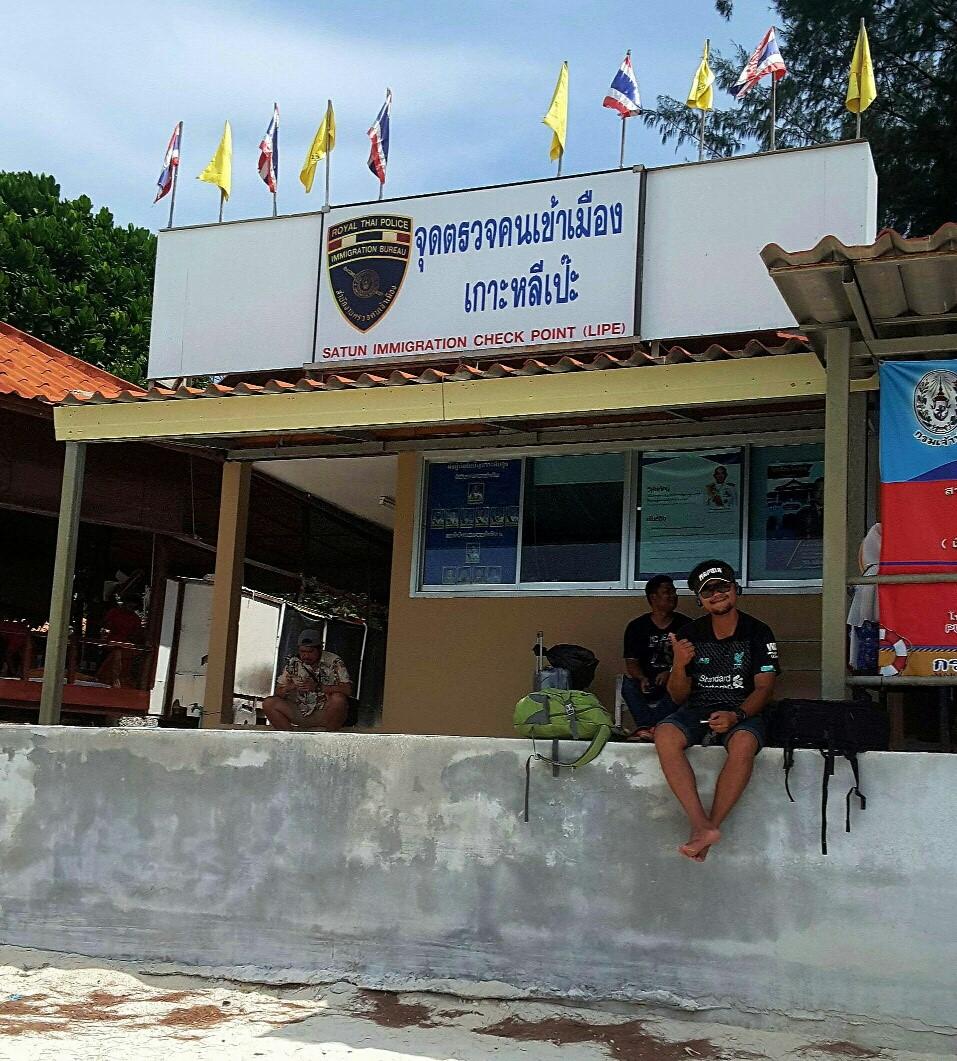
Immigration signs.
passports, and boat papers. The Immigration Officer does the lot, Immigration, Customs and Harbour Master. We were impressed how quickly and efficiently the process was handled.
Unlike Langkawi’s main beach, Cenang, where buildings block access to the sea, Pattaya Beach is generously wide with little bars, hostels and hotels set back with only low-rise buildings. There are no cars; just motorbikes with sidecars used as taxis or scooters to hire. The access to Walking Street is off this beach. This is a fun place to spend time after late morning when the little stalls, boutiques, and cafes open. The narrow lane heads inland for about half a kilometre. At night it comes alive with pretty lights, food, and music until about midnight.
I am a coffee fanatic. Each destination becomes a hunting ground for the best coffee. I only have one a day, but it must be a good one. Another favourite of mine is anything avocado, especially avocado and chocolate smoothies, but sadly this is not a good avocado season so I missed out, though
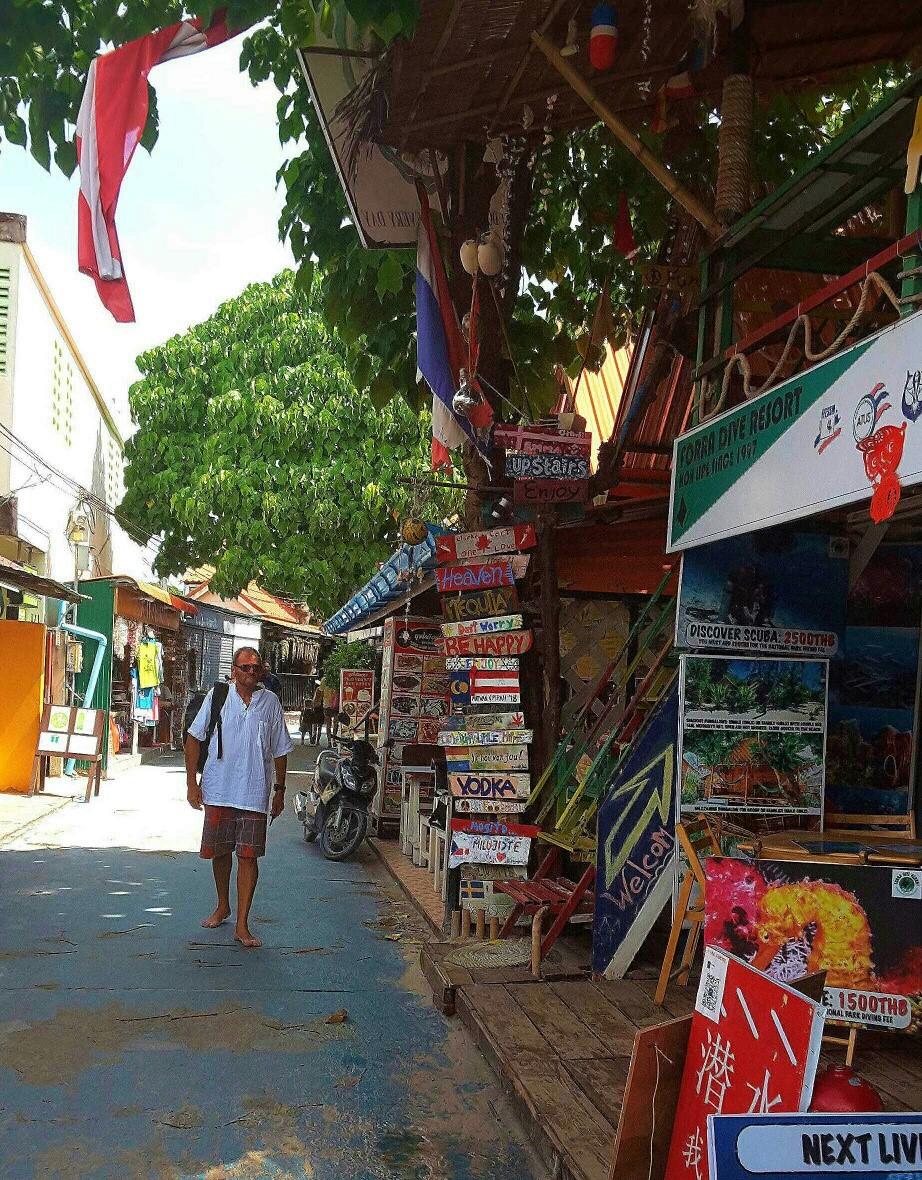
ABOVE: ‘Our’ pizza place.

BELOW LEFT: My DH in Walking Street.
probably a good thing for my waistline. I had a coffee instead and I was in raptures. I only hope Blooms Cafe and Hostel keeps up the high standard consistently because we shall visit again. This big village has everything you may need and probably much that you do not. There are pharmacies (no hospitals), ATMs, hairdressers, dive shops, souvenir shops, clothes boutiques, a small supermarket, lots of cafes selling local foods, many massage places, a pricey but good international restaurant/bar named The Box which does great hamburgers with good Australian beef. But our favourite stop is a tiny pizza place. For the past few years we have dropped by and got to know the people who run it. The owner works the season in Koh Lipe while her husband does the same in Koh Phayam, further north offshore of Renon, in their other pizza shop. The Thais we have met work hard and seem to be most enterprising.
Wandering the lanes that split from the main street is fun as well as an excuse to walk off the delicious coconut ice-creams and do some people watching. Koh Lipe is a cosmopolitan place and just about anything goes with the tolerant Thais.
The scenery of nearby islands with their limestone karsts and sheer cliffs is dramatic. Tarutao Island is a large island approximately 20 nautical miles away from Koh Lipe, with an interesting history as a penal colony and as a pirate hangout. It has good anchorages.

Fifty-three nautical miles away, Koh Muk is another favourite. We paid 200baht each for tickets to enjoy the national parks for five days. The fee goes towards helping keep the beaches clean and walkways clear.
RIGHT: Time for a massage.
BELOW: Street map of Koh Lipe.

Hopefully, you will want more than the taste of Thailand that Koh Lipe will give you and will wish to explore more of this magical country. Over the years we have travelled many thousands of kilometres by sea and by motorbike up to the border with Myanmar and Laos and continue to be enthralled at the diversity of scenery, the culture, and the smiling people. There is a feeling of joy here. You just can’t help smiling in return.


*DH = Dear Husband
A New Zealander by birth, Gina has been sailing full time on her monohull, a Gib Sea 47.2 with her husband Christian Selaries for the past 15 years. They set sail from NZ in 2005, sailing the South Pacific, Papua New Guinea twice, Australia to Indonesia twice, exploring Borneo, Thailand and Malaysia, and the South China Sea.
Sailing was a huge change from the career Gina enjoyed as university lecturer in marketing, innovation, and entrepreneurship, and as CEO of her business consultancy, Masters Consulting. She continues her work as a Life Coach. Her newest adventure is as book author, having previously had articles published in sailing magazines in Germany, USA, Australia, and NZ. Gina’s aim in life is to inspire and support women in particular, to make the ‘leap’ to a more adventurous, fulfilling life.


SisterShip Revisited
By Sarah A Miller
What are your first memories of sailing?
I was about 12 the first time I went sailing, on a dinghy that our neighbours owned. We lived on a school compound in Suva, Fiji, and they kept the boat under a mango tree of the boarding house between our houses. They sailed at Laucala Bay, near the University of the South Pacific, and launched the boat where the NZ WWII seaplanes used to land. I think it must have been a fairly gentle trip because I don’t remember much about being on the water.
My next recollection was crewing for a school mate, Jean, in a Heron when I was in Year 12 in Whyalla, South Australia. For some reason, whenever we jibed, we would capsize. So, we got plenty of practice at righting the boat, although the rescue boat was always nearby or closer when white pointers were known to be about! Learning
to sail in Whyalla wasn’t the best place to “learn to feel the wind” because the BHP stack always told you where the wind was.
How did you hear about SisterShip?
I heard about SisterShip from a work colleague at CSIRO (Commonwealth Scientific and Industrial Research Organisation), Glenda, who used to work in the laboratories at Cronulla. Glenda was an excellent storyteller and talked about CSIRO staff who had often kayaked to work from across the bay at Bundeena. Glenda also spent a bit of time at sea on research voyages and my memory of those stories was about big seas and swells and being seasick.
Why did you write the article?
I wrote the article about Lady Elliot Island in 1988 after describing the holiday to a friend, Diana Temple, who was also a friend of Ruth

BELOW: Kayaking on Lake Macquarie during the novel coronavirus pandemic (Photo: Robyn Fry).
Boydell’s (founder and editor of the original magazine). I wasn’t sure that SisterShip wanted “land-based” stories, but I’m glad that I was introduced to Ruth through this story. I met Ruth in person 15 years later when I moved to Lake Macquarie.
What have you done since then?
Since the Lady Elliott holiday, I have also had a few sea-kayaking adventure holidays at Hinchinbrook Island in north Queensland, in the Yasawa Islands in Fiji, and Isla de San Cristobel in the Galapagos.
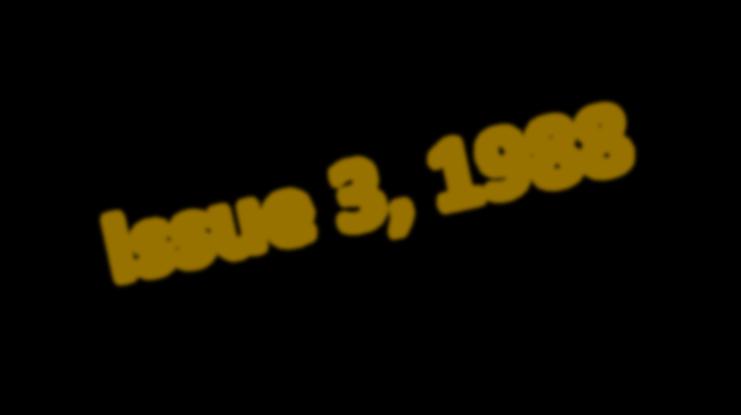
About six years ago I started sailing regularly with friends Jittima (Kae) and Paul, and border collie Bosun, on a 39-foot catamaran on Lake Macquarie. In 2017 Kae and I did a “Women’s Sailing Experience” course in a Force 24 at the Newcastle Cruising Yacht Club. Some of the trips we have done from Lake Macquarie are to Broken Bay and Cowan Creek, to Broughton Island, as well as to Sydney Harbour.

You can read Sarah Miller’s Lady Elliot Island story from 1988 in Issue 3 of SisterShip Magazine. Free back copies of the original magazine have been scanned and uploaded to www.sistershipmagazine.com

